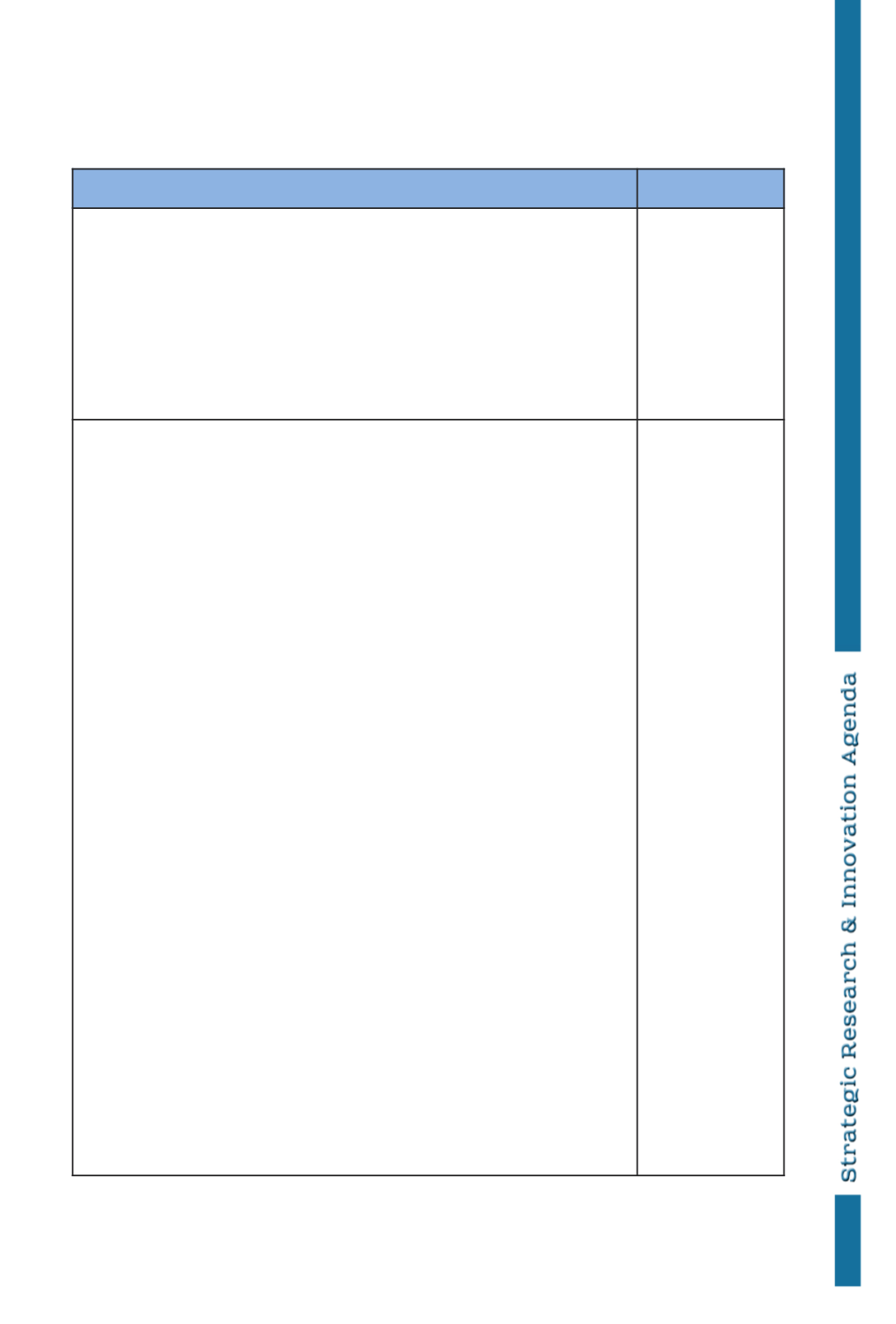
Currently Identified Needs
RDI needs and rel ated ob jecti ves
Time frame
RDI needs and rel ated ob jecti ves
Time frame
2.1.1. Developing analytical techniques for groups of substances
Improving methodologies for the detection, quantification and monitoring
of emerging substances, DBPs, their metabolites and degradation prod-
ucts in different compartments of the environment. The development of
real-time, warning systems and online technologies is of special interest.
Developing new approaches to analyse the combined effects of chemicals
(i.e., chemical mixtures), integrative bio-assessment tools and new bio-
markers and bioassays.
Short
2.1.2. Cont rol li ng dis infecti on by-products, emergi ng pol lu-
tants and pathogens , i nc luding thei r envi ronmental ef fects
Understanding and predicting the environmental behaviour of emerging
pollutants in surface water, sediments, soil and groundwater.
Assessing the transfer time of different pollutants as well as understand-
ing the processes during transfer.
Expanding the knowledge base on antibiotic resistance in aquatic envi-
ronments: developing comparable and validated data sets on the preva-
lence and spread of major bacteria in the aquatic environment with
clinically and epidemiologically relevant antimicrobial resistance in Europe.
Developing integrated risk-assessment procedures, including the effect
of long-term exposure, for antibiotics and other emerging pollutants act-
ing at sub-lethal levels.
Modelling transport, growth and degradation of emerging pollutants and
pathogens.
Assessing and implementing management measures and technologies to
reduce the impact of emerging pollutants and pathogens on water qual-
ity. Specific focus on wastewater reuse is required.
Developing a better understanding of the extent to which emerging pol-
lutants are removed or modified by water treatment plants/natural
processes in soil and water.
Understanding the factors that control the bioavailability and fate of
emerging pollutants in organisms.
Characterising the effects of emerging pollutants and their metabolites,
on human health and on ecosystems.
Assessing both the occurrence and toxicity of regulated and emerging
disinfection by-products.
Developing strategies to reduce emerging pollutants at source (e.g. air-
ports, golf courses, rail tracks, highways, hotels, pharmaceutical sources).
Improving technologies for the specific removal of natural organic matter
from surface water so as to avoid the formation of DBPs during the chem-
ical disinfection process (with chlorine, chloramine, and ozone).
L ink
with 3.1.2.
Short
27


